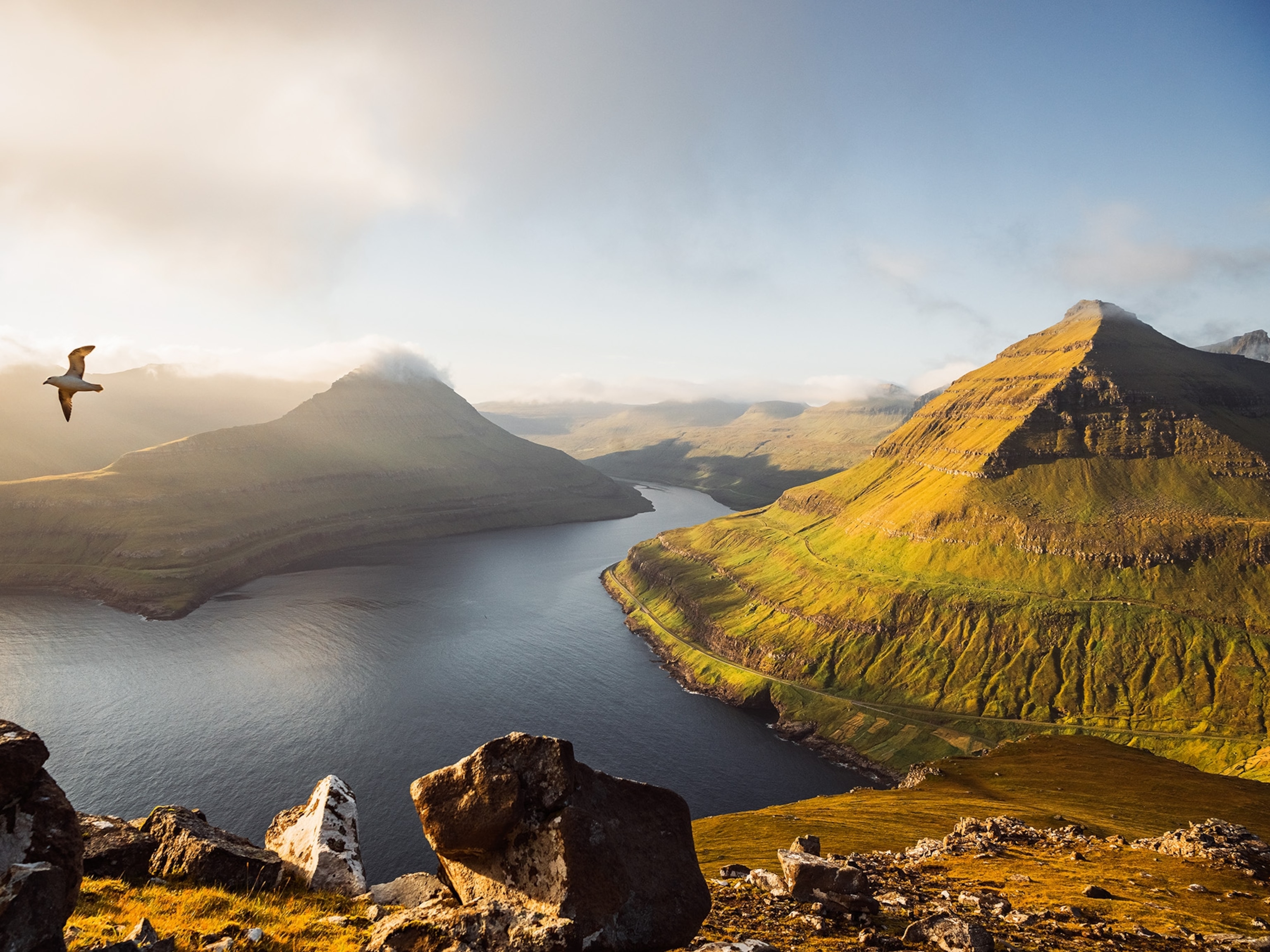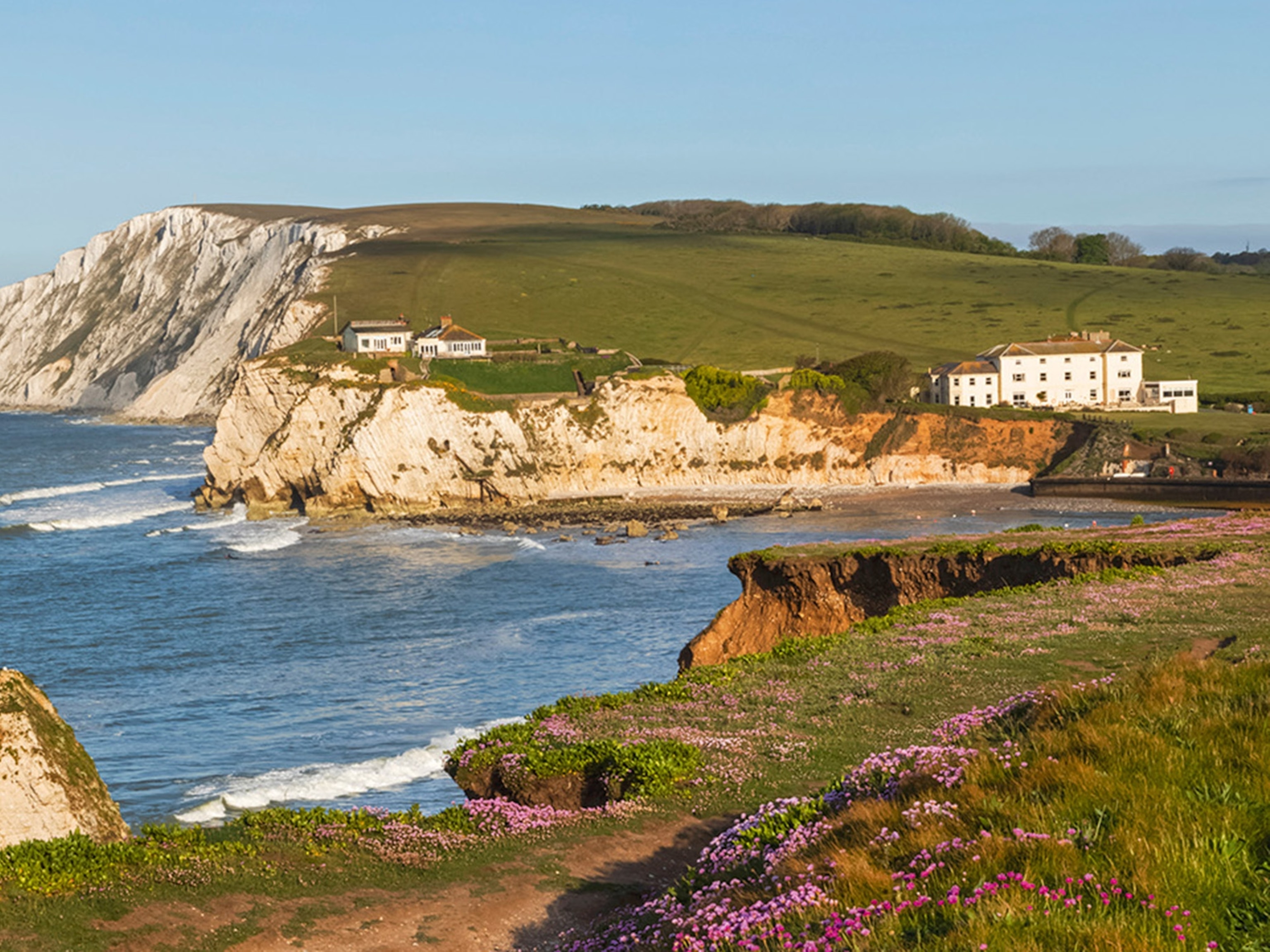
How to spend seven days exploring the nature-filled island of St Helena
Moments of seclusion, vast stretches of lush landscapes and wildlife found nowhere else on the planet all go hand in hand in St Helena. Here’s how to spend a week making the most of this South Atlantic island.
An emerald fleck floating in the blue orbit of the South Atlantic Ocean, St Helena is one of the most isolated islands on Earth and serves up an unmatchable mix of raw nature and a laidback dose of old-style Britannia. Finally unlocked after the pandemic, the British Territory offers that rare thing: a chance to remember the sweet silence of life without the tring of mobile phones and glare of white screens. A place where keys are left in car ignitions, the dramas of rolling 24/7 news seem a world away and people still greet each other in the street. A place where days can be spent tracing rugged walking trails, meeting the world’s oldest living land creature and snorkelling with leviathans. A stress-free escape where even the locals — the descendants of settlers, soldiers and slaves — are nicknamed ‘Saints.’ Come to unplug and reconnect with wildlife found nowhere else on the planet.

Day one-two: hiking and walking
Criss-crossing the island’s mist-laced peaks and fields of swaying flax are 11 footpaths and 21 Post Box Walks, each of which concludes with a box containing a collectable ink stamp that visitors like to mark in small notebooks. Distances range from a gentle one-mile stroll to a 3.5-hour, seven-mile hike. Favourites include ascending though the cloud forest to Diana’s Peak, St Helena’s highest point, or the challenging trek out to The Barn, a volcanic bluff. Other unmissables are the Heart-Shaped Waterfall, Longwood’s rainbow-hued hills and the phallic wind-hewn pinnacle known saucily as Lot’s Wife. Alternatively, pit your calves and lungs against Jacob’s Ladder, a flight of 699 steps — nicknamed after the biblical stairway to heaven — scaling the western slope of Jamestown’s deep valley and all that remains of a cable railway built in the 1800s.

Day three: endemic wildlife
Ever since St Helena erupted from the sea some 13 million years ago, it’s been totally isolated and as such is home to more than 500 species found nowhere else on Earth. Peel back ferns and study black cabbage trees on Diana’s Peak to spot blushing snails and golden sails — one of 22 endemic types of spider. Spy the long-limbed endangered St Helena plover, or wirebird — the island’s only surviving endemic land bird — emerging from burrows amid the dry pastures of Deadwood Plain, and meet the world’s oldest living land animal, Jonathan, a 190-year-old Seychelles giant tortoise who’s grazed the grounds surrounding Plantation House, the governor’s residence, since 1882.
Day four: culture and cuisine
Here, friendliness is a vital part of island life. Drivers wave to every car that passes and islanders send messages to each other via Saint FM. Their seclusion brings quirks, too. Stroll down Jamestown’s high street and you’ll hear musical ‘Saint speak,’ a South Atlantic English patois where locals don’t ask ‘How are you?’ but rather ‘Wa now you awrigh?’ Isolation has inspired invention. When food imports are delayed, Saints have learned to rustle up unique local delicacies. Try the beloved bread and dance, tomato-paste sandwich, and comforting plo, a one-pot curried meat, vegetable and rice dish. Locals also grow and brew the world’s most remote coffee — keep an eye out for the Midnight Mist Coffee Liqueur, made with beans grown on the island.

Day five: Napoleon
Trace the final years of St Helena’s most infamous resident: French emperor Napoleon Bonaparte. Exiled here in 1815 by the British government following his defeat at Waterloo, Napoleon spent his days under house arrest inside elegant Longwood House, in the eastern inlands, until he drew his last breath in 1821. Rumour has it his demise was hastened by the house’s arsenic-laced green wallpaper. Afterwards, a farmer used the emperor’s bedroom to house sheep, but the property was sold back to the French government in 1858 and subsequently restored. Visit the gardens he designed, the billiards table he spread maps on and his canopy-cloaked bedroom. Nearby, stands his modest iron railing-guarded tomb.
Day six: underwater adventures
Book with either Dive Saint Helena or Sub-Tropic Adventures and submerge yourself in the fecund waters surrounding the island. St Helena’s volcanic base pushes up a lifeline of nutrients from the deep, attracting a riot of marine life. Between June and December, migratory humpback whales pass through, pausing to calve in July. Visitors also include bottlenose, pantropical spotted and rough-toothed dolphins as well as green and hawksbill turtles, while the rocky, wreck-strewn reefs shelter 10 species of endemic fish, including the bastard fivefinger and St Helena dragonet.

Day seven: Dark Skies
Come nightfall, lay beneath St Helena’s incredibly sparkly skies. More than 1,000 miles from the nearest major landmass and with a total of just 4,400 inhabitants, there’s virtually zero light pollution and the island’s location near the Equator means constellations belonging to both the northern and southern hemispheres, such as the Plough and the Southern Cross, can be seen. St Helena is in the process of applying for International Dark-Sky Association status and early measurements suggest the island’s night skies are significantly darker than Sark, the first island in the world to be accredited.
For more information, visit sthelenatourism.com
Follow National Geographic Traveller (UK) on social media






